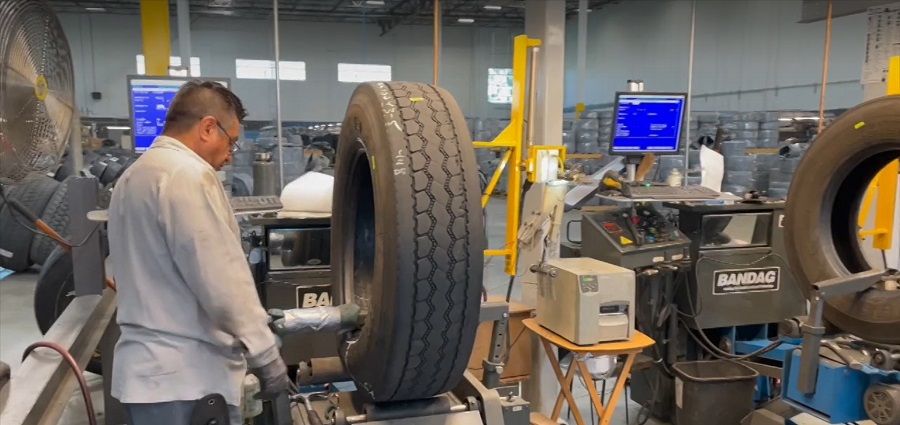Retreads
Retreading is the process whereby selected and inspected worn tires, called “casings,” receive a new tread.
What is Retreading?
Only carefully inspected tire casings that satisfy established standards are used for retreading. The worn tread is buffed away, and a new tread is bonded to the tire body in a process very similar to the manufacture of a new tire. The buffings are reused by tire-derived product manufacturers. Different processing techniques are used, but the ultimate objective is always the same—affixing a new tread through heat, time, and pressure.
Why Retread?

- Most trucking fleets, airlines, bus fleets, construction companies, and farmers purchase retreaded tires to save money.
- A retreaded tire costs less to produce than a new tire and sells for less.
- Using retreaded tires saves the commercial and military aircraft industries more than $100 million a year.
- Retreading truck tires saves the trucking industry over $3 billion each year.
- Retreaded tires are such a good value because most of the new tire manufacturing cost is in the body or casing. The tread is only a small percentage.
- Today’s commercial truck tires are specifically designed to provide multiple tread lives over the life of the casing.
- Research has shown that retreading a premium tire two times can keep that tire on the road up to 500 percent longer than low-cost single-use tires available on the market today that are not suitable for retreading.
Is Retreading Green?
Yes, by reusing resources, retreading offers several important environmental benefits and can help companies meet their sustainability goals and advance the circular economy for tires.
- Retreading conserves oil. The manufacture of a new medium truck tire requires approximately 22 gallons of oil, but it takes only seven gallons to retread. Every year retreads save hundreds of millions of gallons of oil.
- Millions of tires that would otherwise be disposed of prematurely in landfills continue their useful lives as retreads for thousands of more miles.
- Retreading has positive impacts on all areas of the environment, including reducing CO2 emissions natural resource extraction, water consumption, air pollution, and the land required to produce natural rubber.
Are Retreads Safe?
Yes. The safety and reliability of retreaded tires have been studied over the past two decades and concluded that retreads are just as safe as new tires.
- Only quality tires that pass rigorous multi-point inspections are used in the retreading process.
- All retreaders adhere to stringent industry-recommended practices at every step of the retreading process.
- Retreaded tires are safely used daily on airplanes, school buses, fire engines, ambulances, trucking fleets, taxis, postal service vehicles, and military vehicles.
- Retreaded tires in all applications have consistently demonstrated the same reliability in operation as new tires.
Resources
- “Choosing Retreads for Your Fleet” Brochure
- California Directory of Retreaders
- Tire Retread & Repair Information Bureau
Disclaimer: Product benefits and standards testing and documentation may vary according to specific products and vendors. CalRecycle makes no warranty, express or implied, and assumes no liability for the information provided in this website. References to individual businesses and their commercial products do not constitute an endorsement by CalRecycle. The information contained in this website is not complete and is provided as a convenience to our website visitors and for informational purposes only.
For more information contact: Tire-Derived Products, TireGrants@calrecycle.ca.gov
